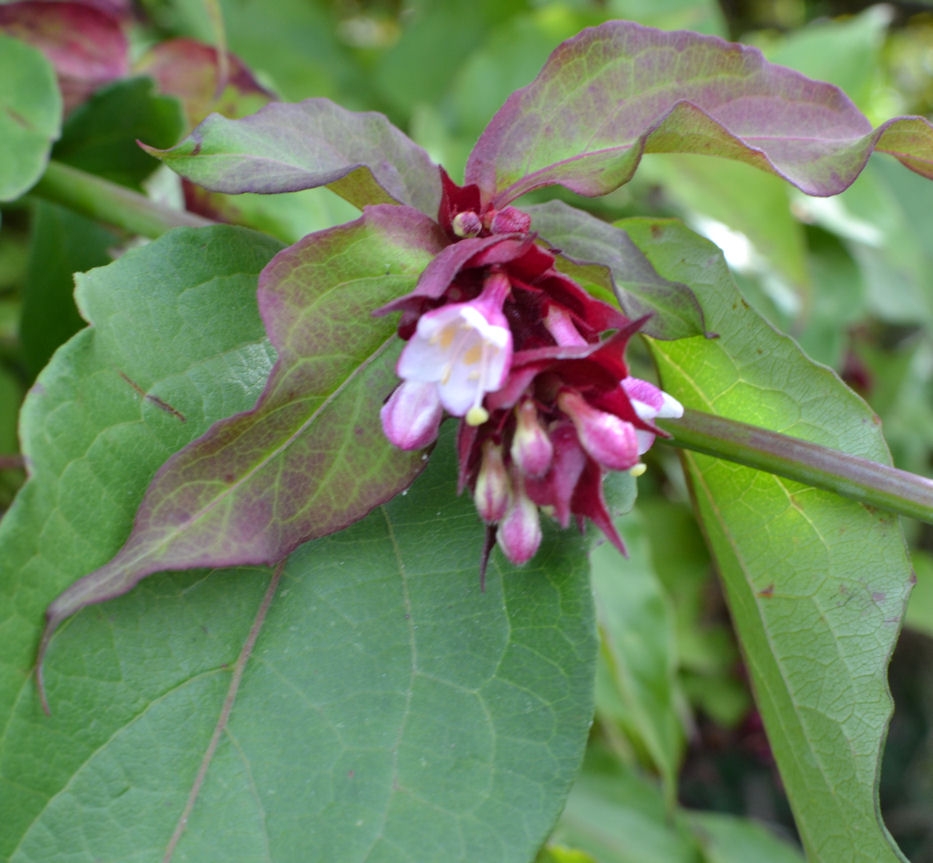
Leycesteria formosa 'Purple Rain', pourpré Pépinière du Penthièvre
The right time to plant Leycesteria formosa 'Purple Rain' is during the dormancy period. In Western Europe, Leycesteria formosa 'Purple Rain' with root balls can generally be planted from mid-November to late April, although this depends strongly on the climatic conditions and the species of tree.

Leycesteria formosa 'Purple Rain' Lejcesteria piękna
Variety or Cultivar. 'Purple Rain' is a vigorous, upright, thicket-forming, deciduous shrub with blue-green stems bearing ovate, tapered, dark green leaves and, from summer to early autumn, pendent racemes of small, white flowers with prominent, reddish-purple bracts. Flowers are followed by spherical, reddish-purple fruit in autumn.

Fazantenbes (Leycesteria formosa 'Purple Rain') Directplant
Leycesteria formosa 'Purple Rain' Himalayan honeysuckle. 2 litre pot: £19.99: 2 litre pot. £19.99: Quantity: In stock (shipped within 2-3 working days) Buy. Delivery options. Standard £5.95; Named Day £10.95; This shrub is deciduous so it will lose all its leaves in autumn, then fresh new foliage appears again each spring..
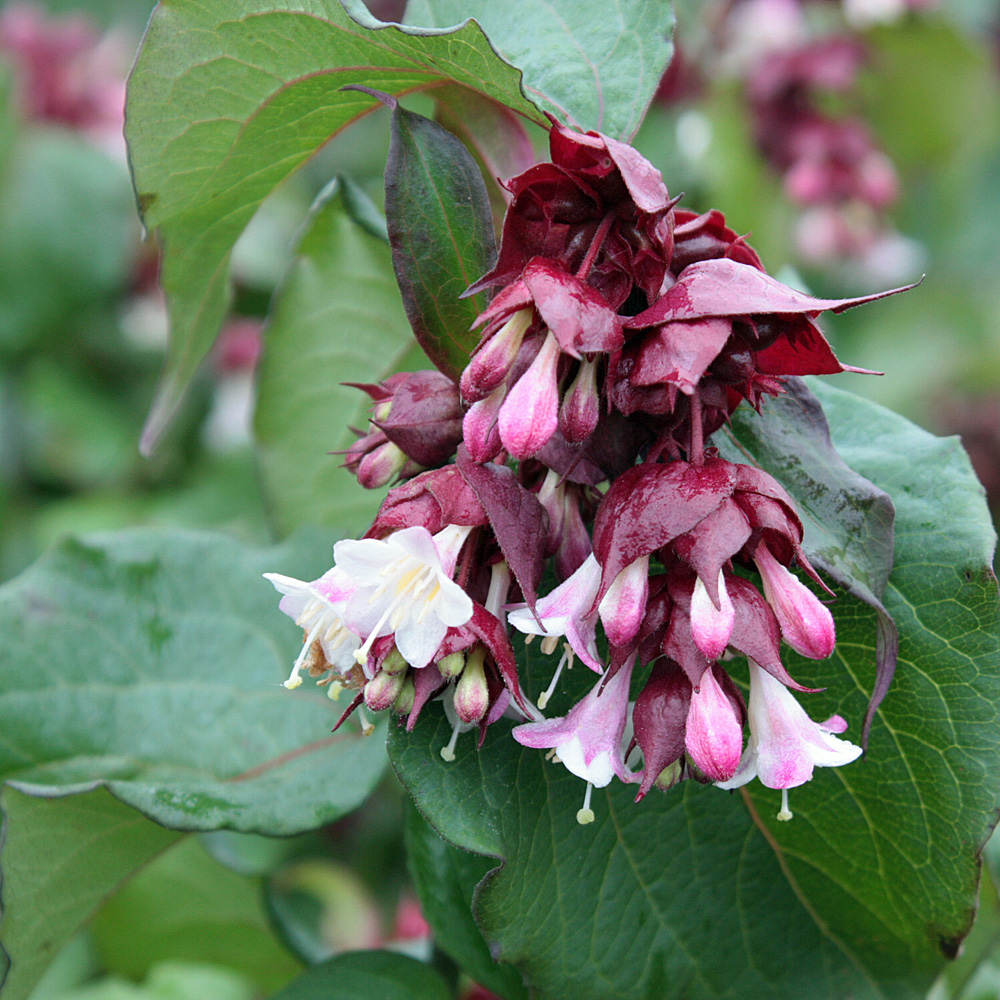
Schöne Leycesterie 'Purple Rain' Leycesteria formosa 'Purple Rain' Dieses breitaufrechte
The right time to plant Leycesteria formosa 'Purple Rain' is during the dormancy period. In Western Europe, Leycesteria formosa 'Purple Rain' with root balls can generally be planted from mid-November to late April, although this depends strongly on the climatic conditions and the species of tree.
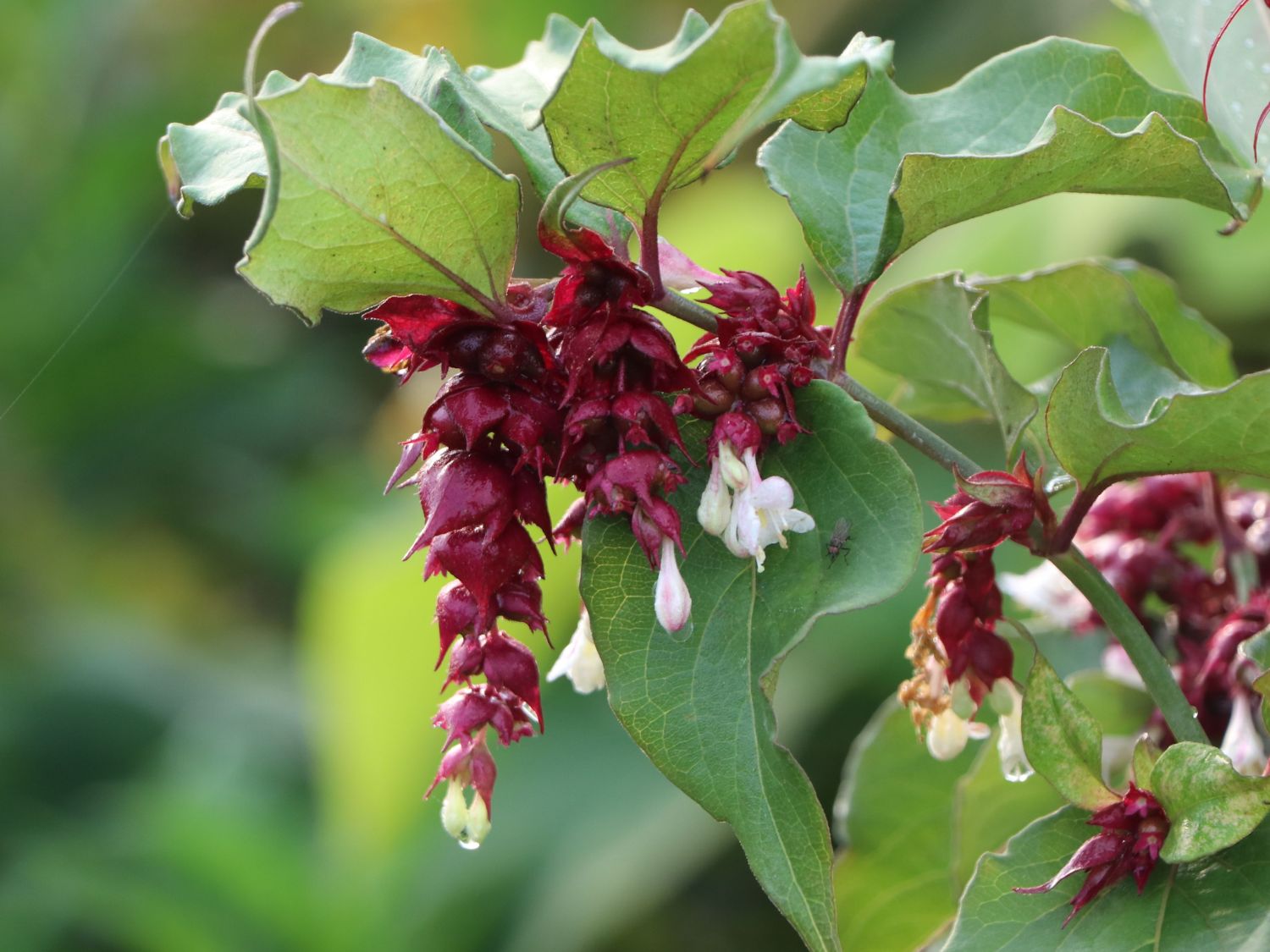
Schöne Leycesterie / Karamelbeere Leycesteria formosa 'Purple Rain' Baumschule Horstmann
Leycesteria formosa 'Purple Rain' has an upright habit with gently arching stem tips that forms a most attractive shrub. This handsome deciduous shrub is ideal for wildlife areas, woodland edges, cottage gardens, and even looks at home among exotic planting schemes. Height and Spread: 2m (6.5'). Plant height and spread is seasonal therefore we.
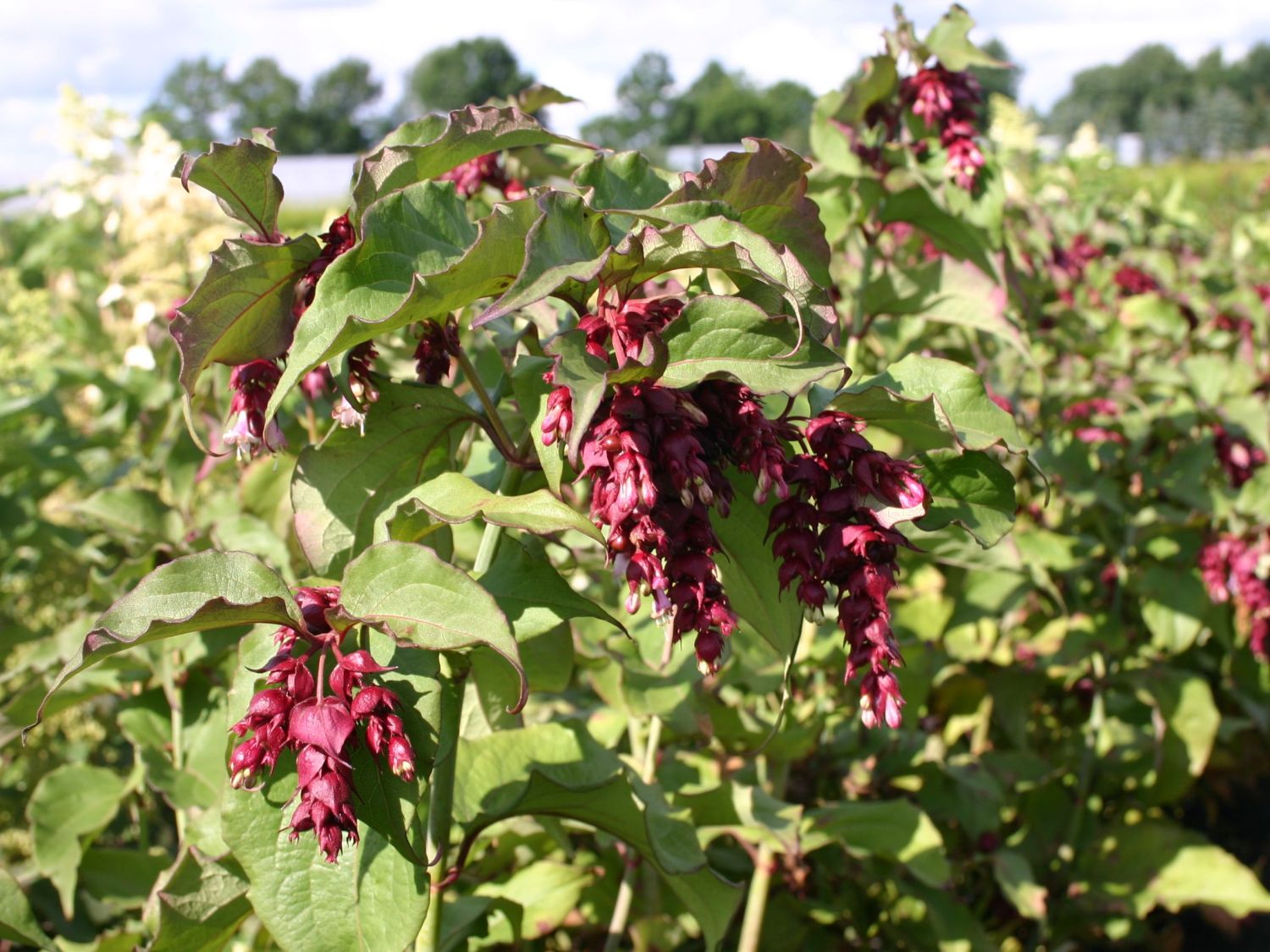
Schöne Leycesterie / Karamelbeere Leycesteria formosa 'Purple Rain' Baumschule Horstmann
How to care for Leycesteria formosa Purple Rain: Apply a generous layer of mulch around the base of the plant in autumn, and protect from cold, drying winds. Trim back lanky stems to buds immediately after flowering, or cut back to a low, permanent framework as the buds beging to swell in spring.

LEYCESTERIA FORMOSA 'PURPLE RAIN' Fazantenbes
Striking purple bracts contrast with the white flowers of Leycesteria formosa. Image John Grimshaw. Shrub to c. 5 m tall, often smaller. Branches hollow; twigs with a glaucous bloom and appressed and sometimes glandular hairs. Leaf ovate to lanceolate, 4-13 × 2-6 cm, base cuneate to subcordate, tip long-pointed, margin entire to dentate.
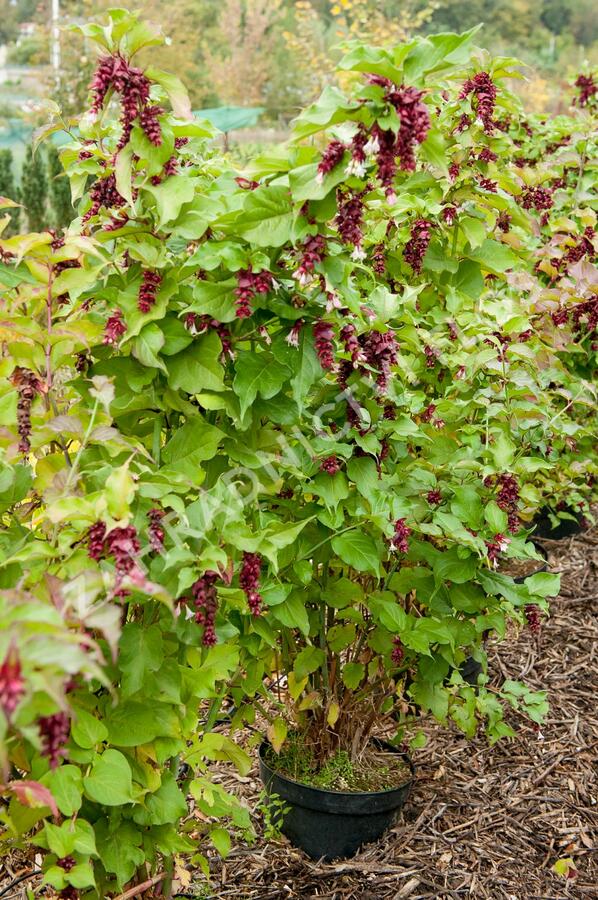
Leycestérie krásná 'Purple Rain' Leycesteria formosa 'Purple Rain' Zahradnictví FLOS
Was £120.00. 25% Off - Now £90.00. Quantity: Leycesteria Formosa Purple Rain Himalayan Honeysuckle. Leycesteria is a small genus of hollow-stemmed flowering shrubs native to China and the Himalayas. Leycesteria Formosa is a mid-sized erect flowering shrub also commonly known as Flowering Nutmeg and Pheasant Berry.
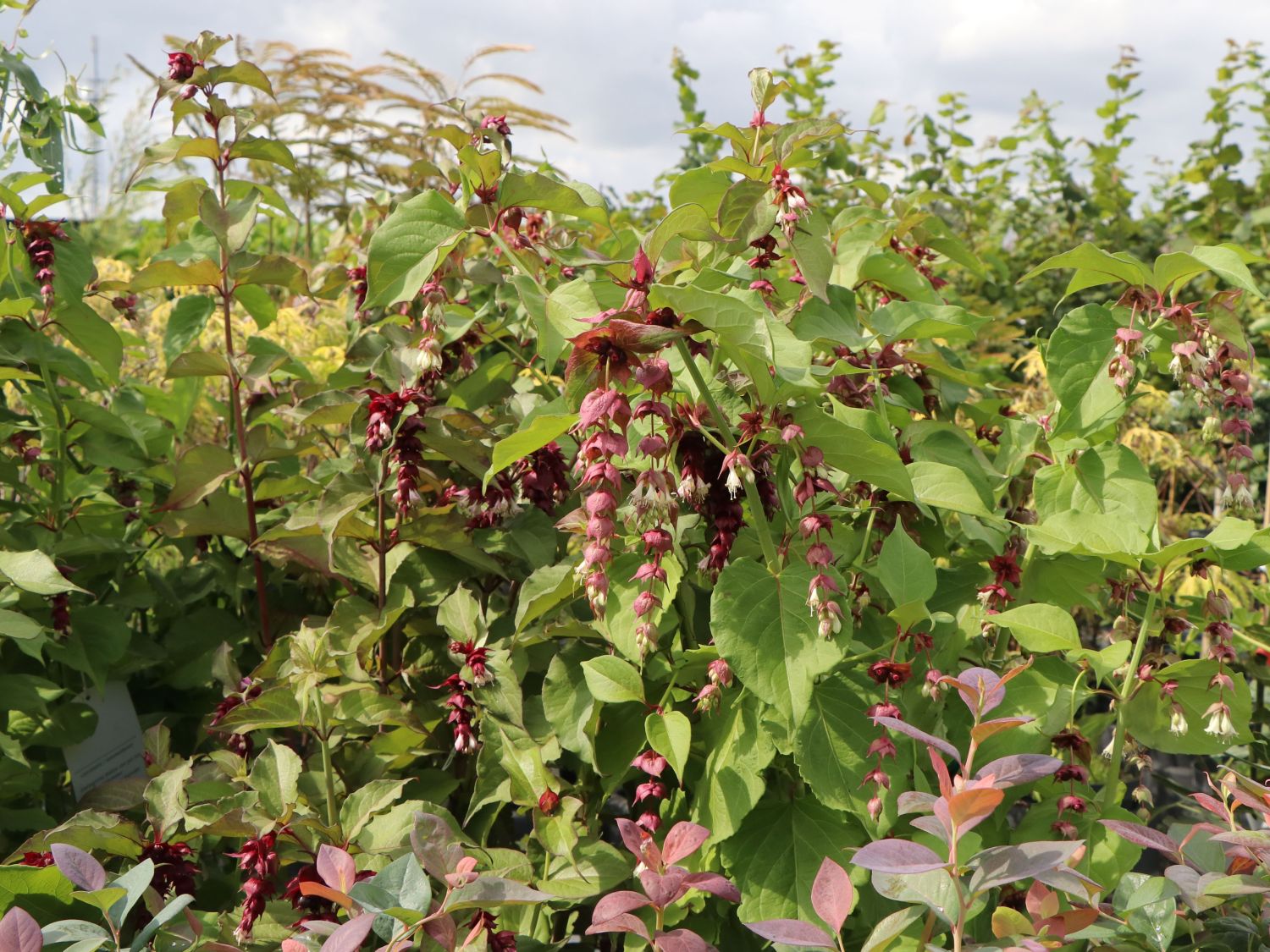
Schöne Leycesterie / Karamelbeere Leycesteria formosa 'Purple Rain' Baumschule Horstmann
Leycesteria formosa 'Purple Rain' Description: This is a new and improved for of Leycesteria which produces a greater abundance of its large pendulous cluster of rich burgundy flower bracts in late summer. The white flowers and later plump purple berries turning black also provide autumn interest.
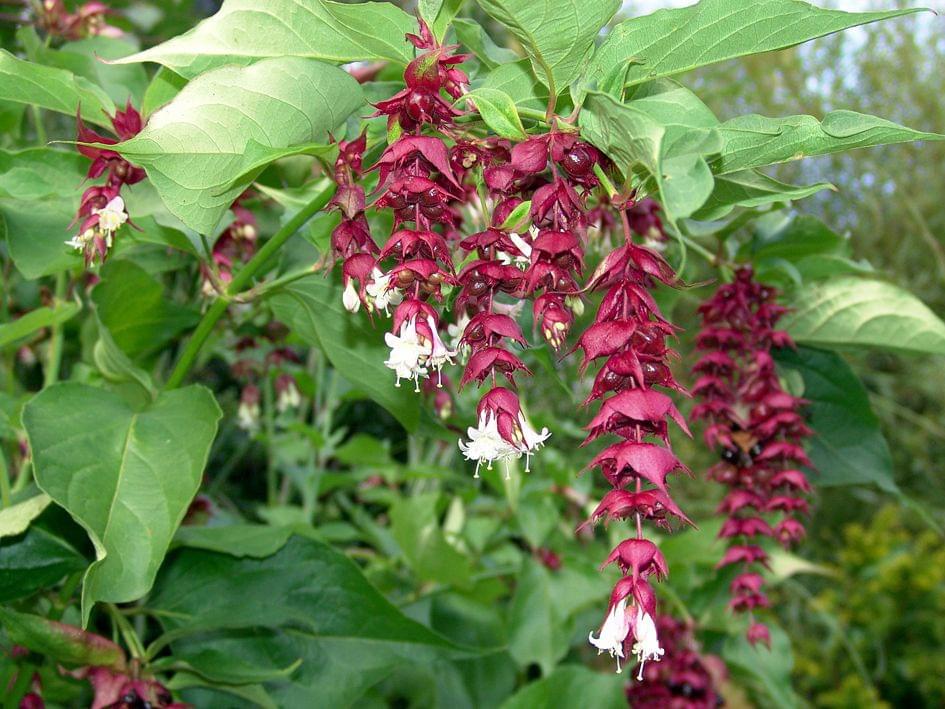
Leicesteria piękna PURPLE RAIN Leycesteria formosa C3/30cm
Leycesteria formosa 'Purple Rain' Arbre à faisans Purple Rain. Twitter. Facebook. Par email. Le + du produit « Compact et dense ! » Description. Entretien. Astuces du coach. L'arbre aux faisans 'Purple Rain' est un superbe petit arbuste trapu, compact et dense. Son beau feuillage vert foncé, légèrement ondulé, se teinte de pourpre. De.
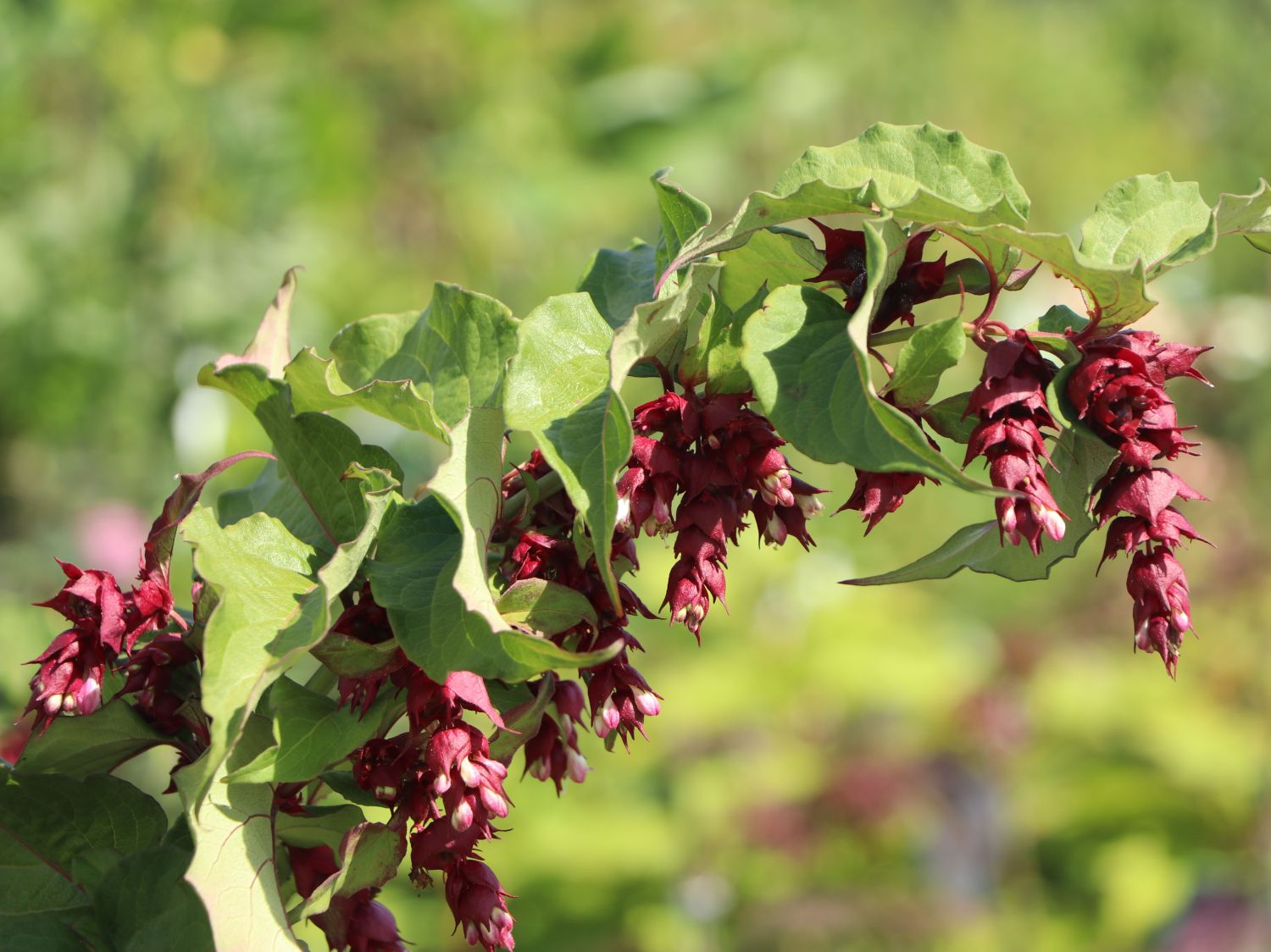
Schöne Leycesterie / Karamelbeere Leycesteria formosa 'Purple Rain' Baumschule Horstmann
Leycesteria formosa 'Purple Rain' Himalayan honeysuckle 'Purple Rain' 'Purple Rain' is a deciduous shrub with green, arching, cane-like stems and soft, pointed leaves. Small white flowers, with deep purply-red bracts, appear in hanging clusters in summer and autumn, followed by shiny, deep purple berries.
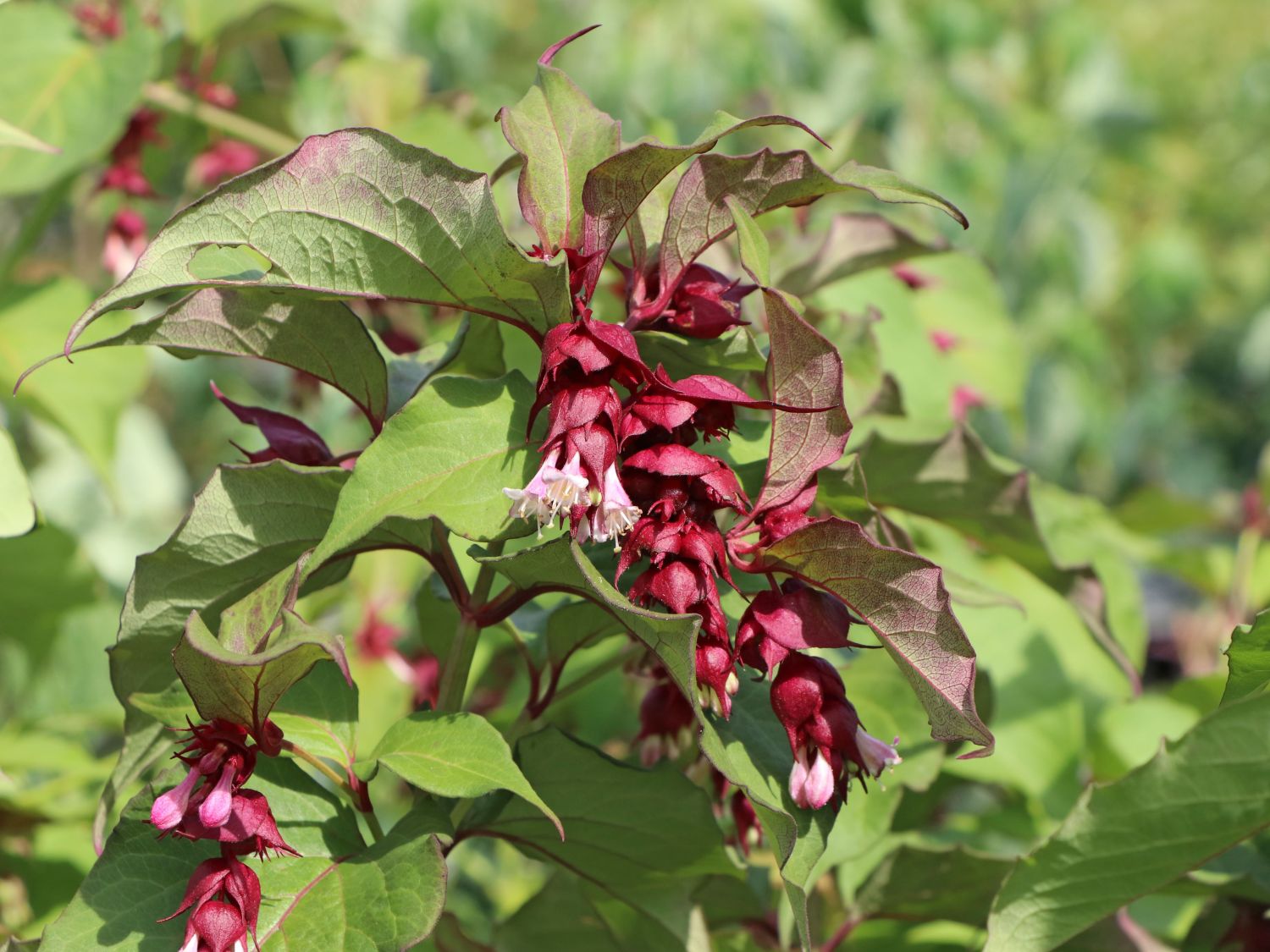
Schöne Leycesterie / Karamelbeere Leycesteria formosa 'Purple Rain' Baumschule Horstmann
How to Grow and Care for Leycesteria formosa: Pheasant Berry AKA Himalayan Honeysuckle is a beautiful, fast-growing shrub with striking flowers.. 'Purple Rain' has deeper purple berries and more vibrant bracts. Family: Caprifoliaceae, the Honeysuckle family. Native: Himalayas and Southwestern China.

Leycesteria Formosa Purple Rain/ Arbre à faisans Purple Rain
Soil. Leycesteria formosa is a robust and easily grown shrub native to China and Tibet, which attracts a wealth of wildlife. It's an extremely handsome shrub with a long season of interest, bearing shapely leaves, trailing white and claret flowers from mid- to late summer, followed by reddish purple berries in autumn.
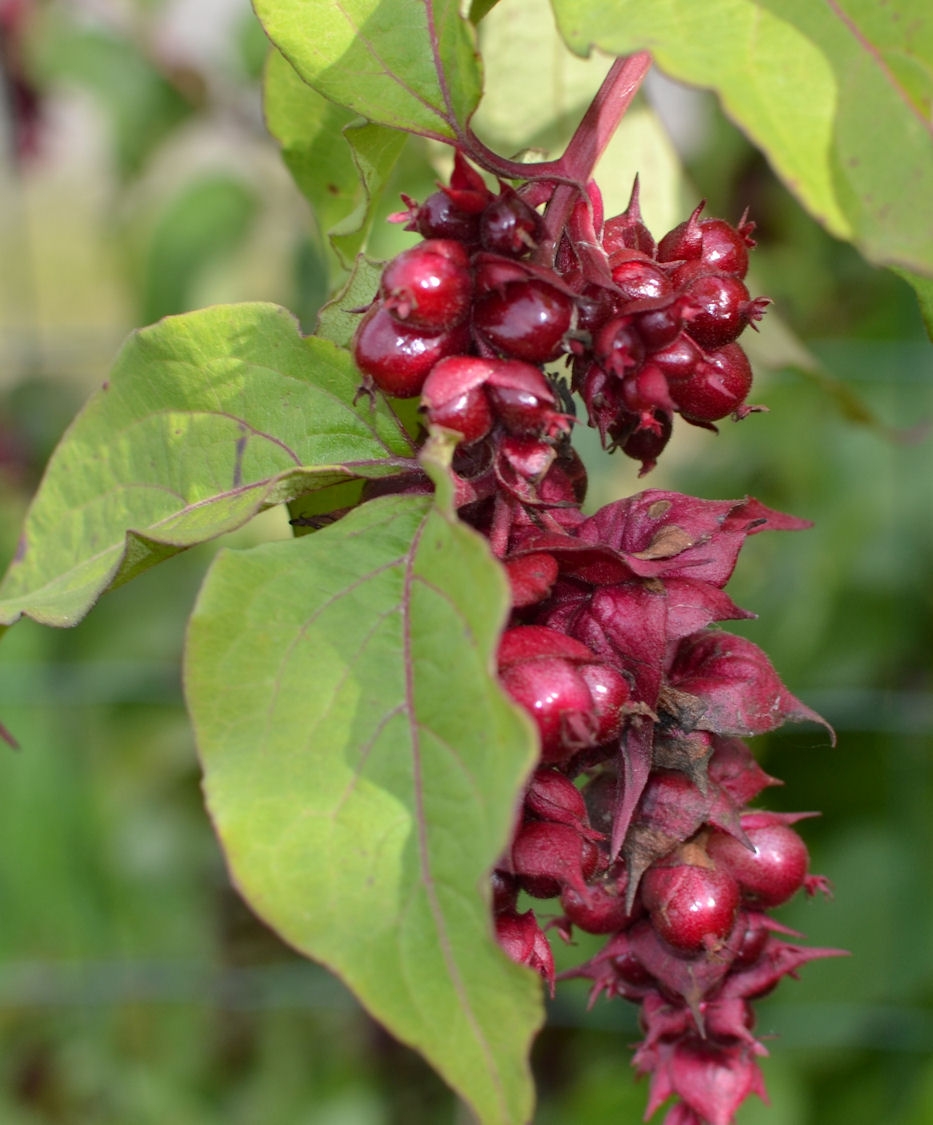
LEYCESTERIA formosa 'Purple Rain', pourpré Pépinière du Penthièvre
Leycesteria formosa, commonly called Himalayan honeysuckle, is a multi-caned deciduous shrub in the honeysuckle family that typically grows to 3-6' tall. It is native to forested areas of the Himalayas and southwestern China. Hollow, bamboo-like, upright, powder-gray stems are clad with opposite, undivided, long-pointed, cordate-based, ovate.
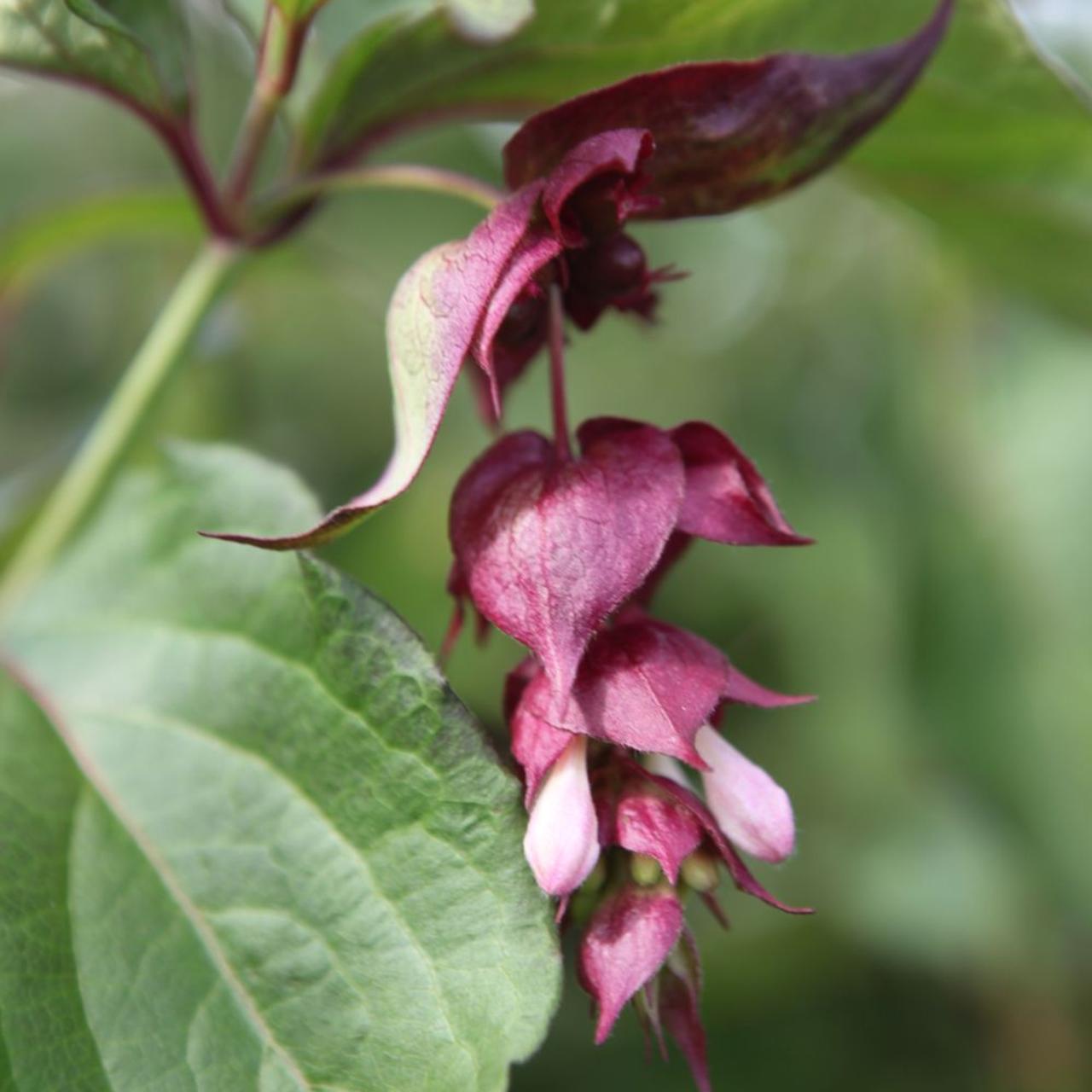
Leycesteria formosa 'Purple Rain' buy plants at Coolplants
Leycesteria formosa, the pheasant berry, is a deciduous shrub in the family Caprifoliaceae,. maroon and purple, 1-3 m (3 ft 3 in - 9 ft 10 in) in height, which may only last for 2-5 years before collapsing and being replaced by new stems from the roots. Mature specimens, however, may have short, truly woody trunks clothed in rough.

LEYCESTERIA formosa 'purple rain' Grandiflora
Leycesteria formosa purple rain is a plant that is native to China and Tibet. It is a member of the Lamiaceae, or mint, family. The plant is a shrub that typically grows to be about 3-5 feet tall. The leaves of the plant are ovate to oblong in shape and are a deep green color. The flowers of the plant are a purple color and are borne in clusters.